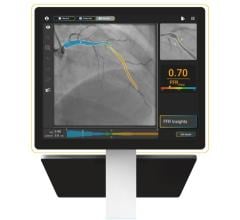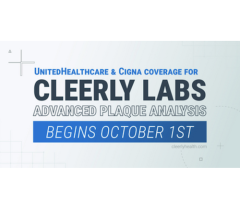
St. John Hospital currently performs about 2,000 percutaneous coronary and peripheral interventions and 400 open-heart surgeries, including minimally invasive and robotic surgery. With a goal to create a full structural heart program that answers its patients many needs, St. John Hospital recently created a hybrid operating room (OR). Among the challenges were deciding where to put the room, what procedures would be performed and what equipment would be necessary.
Treating Previously Inoperative or Complex Patients
“We feel it is very important to stay at the cutting edge of technology,” said Thomas LaLonde, M.D., chief of cardiology and cardiovascular services. “If you really want to create a structural heart program, we felt very strongly that having sophisticated imaging in a hybrid lab in conjunction with the sterile environment of an operating room would be paramount to that success.”
This is also where St. John Hospital sees the most growth potential for its program. “With the development and advancement of angioplasty and stents and better long-term results, the number of patients requiring coronary bypass surgery is decreasing,” said Sanjay Batra, M.D., chief of cardiothoracic surgery. “As patients are living longer, however, the need for valvular surgery is increasing. As technology advances, we are able to perform these procedures on patients who would not have been operative candidates in the past. But if you don’t have a state-of-the-art facility to perform these procedures, the results will certainly not be what we expect or need.”
“To me, a hybrid OR is an absolute must for certain procedures like a thoracic aortic aneurysm, aortic dissection, percutaneous valve and the c-clip for the mitral valve,” said Kumara Rama, M.D., vascular surgeon. “These kinds of procedures cannot be done without a powerful C-arm.”
Determining the Best Fit for the Space and Budget
After performing a thorough review of equipment and visiting several hybrid OR sites, decision-makers at St. John Hospital selected the Artis zee ceiling-mounted C-arm for several different reasons. Physicians were impressed with the 3-D imaging provided by syngo DynaCT. The flexibility of the ceiling-mounted system and the positioning capabilities were greatly appreciated, and the staff felt the system could be moved out of the way quickly and easily parked when not in use.
Further, after comparing all the vendors and different systems, the Artis zee ceiling-mounted system was more cost-effective for St. John Hospital’s budgetary needs. “Budget-wise it was more practical for us to use a ceiling-mounted system,” said Michael Vicencio, applications specialist for cardiology.
The room additionally includes several booms, various lighting, a video conference system with seven monitors, media streaming, color-balancing LED lights, and a video display with four LEDs put together to create a window effect. Here, staff can display a variety of soothing images, such as tropical beach scenes.
Improving Patient Safety and Resource Efficiency
St. John Hospital staff members have performed approximately 180 cases in the hybrid OR, with scheduling determined by which cases would most benefit the patient. Among them was a patient diagnosed with severe three vessel cardiac disease and a more than 80 percent stenosis in the carotid. Rather than performing an open carotid endarterectomy and later open-heart bypass surgery, clinicians accomplished both procedures at the same time.
“In the hybrid OR, we started by performing a carotid stent, did our procedure and then the patient was prepped for bypass surgery,” said Tom Davis, M.D., director of the cardiac cath lab and peripheral vascular program. “The anesthesia time is shorter for the patient because we did conscious sedation for the stent. From our standpoint, in terms of OR time, the combined procedure is much quicker than a carotid endarterectomy and bypass surgery. Plus, if there are complications, you can have the chest opened up within minutes. I truly believe the hybrid OR is safer for these patients.”
Tips to Consider Before Creating a Hybrid OR
• Create a multidisciplinary team across all specialties consisting of physicians, nurses, IT, and administrative directors.
• Decide is this a cath lab that can function as an OR or an OR that has cath lab functionality. This will help you determine what to put in the room.
• Use or create a room as big as you can. The room always begins to shrink as you add equipment.
• Go on site visits and note the size and space restrictions of the room and equipment.
• What features do they use and what features offer little benefit? This will help you determine what equipment and features should be included in your hybrid OR.
For More Information: www.usa.siemens.com/surgery


 October 24, 2025
October 24, 2025 









